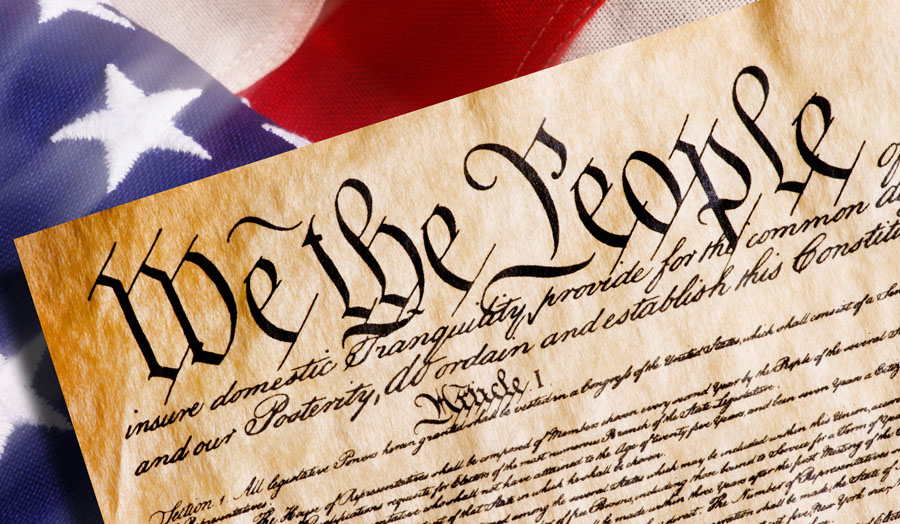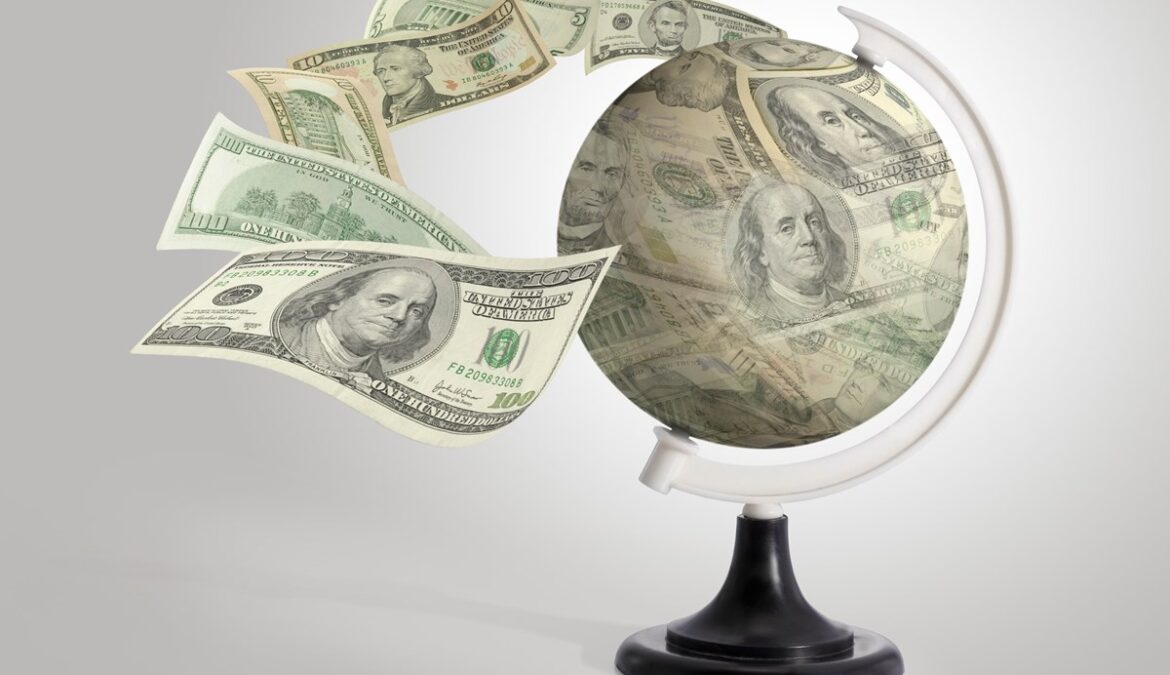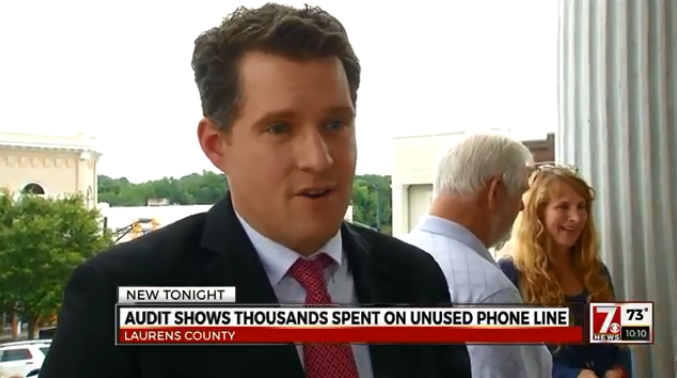Just because Bitcoin is decentralized, that doesn’t mean it’s not regulated. It’s just not regulated by a central bank or government.
In 1788, Thomas Jefferson wrote in a letter that, “Paper is poverty. It is only the ghost of money, and not money itself.” Jefferson and the Founding Fathers understood the history and dangers of a government’s manipulation of money. They knew that kings and empires of the past had debased and devalued currencies, completely removing the accountability that precious metals enforced on governments.
While many items have served as mediums of exchange throughout history, governments and societies have consistently recognized gold and silver as legal tender. The problem is that governments and central banks have traditionally controlled currency in order to tax and control people. History shows that most governments had a gold and/or silver standard at its inception, but later deviated in order to impose complete tyranny on a society, the funding of war, and further taxation in general.
If Thomas Jefferson were here today, would he and other American revolutionaries support cryptocurrencies?
The Founders tried to hold government spending to sound money standards with Article 1, Sections 8 and 10 of the Constitution and the Coinage Act of 1792, which tied the dollar to a specific weight of gold and silver and recognized gold and silver as legal tender. However, these checks and balances were removed completely as time went on, which allowed for unprecedented levels of government debt and manipulation by the Federal Reserve.
If Thomas Jefferson were here today, would he and other American revolutionaries support digital cash and possibly even use cryptocurrencies?
Jefferson’s Wheel Cipher
In 1790, long before electronic computers were invented, Thomas Jefferson actually invented the first mechanical method to encode and decode secret messages, utilizing something called the Wheel Cipher. America’s third President understood and invented a secure way to utilize cryptography. Jefferson, Paine, Franklin, Washington, Madison, and others used cryptography to code messages for secrecy against the British.
Cryptocurrency utilizes cryptography in order to securely alter data on the blockchain, known as the ledger. Cryptography is also used to encrypt and secure data in many different ways and applications today. Modern day encryption was influenced by Thomas Jefferson’s Wheel Cipher invention, an that invention was way ahead of its time.
How do Bitcoin and top altcoins compare to the sound money properties of gold and silver?
The Money Revolution
In October of 2008, the white paper by Satoshi Nakamoto put the pieces together and built a new protocol, a peer-to-peer system for digital cash known as Bitcoin. While this technology is still very new, cryptocurrency actually has many of the same sound money characteristics as gold and silver.
In this exciting time, there are many use cases for various blockchain protocols that are being tested; however, cryptocurrency is the initial primary use of the blockchain. With over 1,000 cryptocurrencies competing at this time, Bitcoin is currently the best store of value, and others like Litecoin, Bitcoin Cash, and Dash are better for mediums of exchange. With this in mind, not all cryptocurrencies are the same.
We know that Thomas Jefferson and the Founders used cryptography to encode messages to keep the British from stealing the secrets of the American revolution. We also know that, for the most part, the Founders had a strict adherence to gold and silver standards. So, how do Bitcoin and top altcoins compare to the sound money properties of gold and silver?
Scarcity
“Specie is the most perfect medium, because it will preserve its own level; because having intrinsic and universal value, it can never die in our hands.” — Thomas Jefferson
Scarcity is a natural control on inflation and runaway government. Blockchain technology (which cryptocurrencies utilize) brings a new level of accountability to money and smart contracts, but also to many applications and processes that are in development. For example, the mathematical algorithm that calculates and verifies Bitcoin is hard-coded with controlled supply. This makes it impossible for central banks and/or governments to inflate it via quantitative easing.
Just because Bitcoin is decentralized doesn’t mean that it’s not regulated. It’s just not regulated by a central bank or government. It’s regulated by a mathematical algorithm which is computed and verified by mining computers.
For the first time in history, we have a decentralized system that isn’t susceptible to human emotion or the intentions of the state. Blockchain technology ensures that more money can’t be created out of thin air. Thomas Jefferson would definitely appreciate that cryptocurrency can “preserve its own level; because having intrinsic and universal value” of the blockchain and that “it can’t die in our hands.”
Cryptocurrency is very fungible.
Fungibility
Fungibility is the property of a medium of exchange whose individual units are essentially interchangeable. In other words, how divisible the medium of exchange may be makes it easier to trade for specific amounts of value or goods and services. As an example, each Bitcoin can be divided into 100,000,000 satoshi, which is equivalent to .00000001 BTC.
Cryptocurrency is very fungible. I would argue that it’s even more fungible than gold because it’s much easier to divide units of Bitcoin for payments using a digital wallet than to divide physical units of gold or silver. It’s also never been easier, faster, or cheaper to send payments for goods and services around the world. It’s not easy, fast, or cheap to ship gold or silver.
Cryptocurrency is definitely still a very new technology. However, 2017 has been a monumental year with updates, forks, and overall improvements. Various competing cryptocurrencies are simplifying usability and working on making blockchain easier for everyone to use. This is leading to wider adoption. To put it in perspective, in January 2017 the total market capitalization for all combined cryptocurrencies was only $18 billion. As I’m writing this, it’s currently at $585 billion.
Durability
How durable is cryptocurrency? You may be thinking, but it’s just data! And you’re correct, it’s data that is not kept in just one location. The decentralized ledger that is maintained in the peer-to-peer network is extremely durable because it’s not housed in just one place.
Think about it like a single server running a network or website. If this server goes down then the website or network is out. Peer-to-peer networks have thousands of nodes (that act like a server) that ensure the integrity, security, and durability of a cryptocurrency. In this sense, it’s extremely reliable.
Scarcity, fungibility, and durability are some of the main characteristics that Bitcoin shares with gold and silver.
So, how can cryptocurrency be durable if you can’t physically hold it? Let’s compare 1 BTC to a digital document on a computer. What if the document is a deed signifying ownership of 1,000 acres of land? Is this an important, valuable document? Absolutely! Well, digital money can be thought of the same way.
There are also many different ways that you can store or use digital money. Hot wallets (like Exodus) can be downloaded to a computer, and they make it easy to send or receive digital money. Cold storage wallets (like Ledger) are great for added security and storing cryptocurrency for the long-term offline. Digital wallets are deterministic, which means they have a seed phrase that allows for easy backup and restoration in the event a computer or device crashes. It’s always a great idea to keep good backups. You can even print a paper wallet. So, not only is it durable but also versatile in how you can store it. There are many types of wallets that work great for using cryptocurrency. It’s best to always read reviews and see what’s working best for the needed cryptocurrency.
Scarcity, fungibility, and durability are some of the main characteristics that Bitcoin (and some other cryptocurrencies) shares with gold and silver, which have stood the test of time as solid standards of value and exchange.
The World Isn’t Fiat Anymore…
“The issuing power should be taken from the banks and restored to the people, to whom it properly belongs.” — Thomas Jefferson
While the concept of digital money can be hard to comprehend, the technology that utilizes blockchain for money like Bitcoin, Bitcoin Cash, Litecoin, Dash, and many others is essentially creating stable, fungible sources for economic value and mediums of exchange. This recent and new-found technology is gaining traction, and it aims to achieve a greater level of economic freedom than the world has ever known.
2017 has been a truly revolutionary year for both money and technology.
Bitcoin, other cryptocurrencies, and technology that utilize blockchain are quickly revolutionizing not only how people can trade, but also who can trade. This money revolution will ultimately put greater freedom in the hands of consumers, removing the manipulation and coercion of governments and central banks. At the very heart of this matter, the market is solving an age-old problem of government controlling an individual’s property and resources.
Thomas Jefferson and the Founders did not have this blockchain technology and, therefore, tried to rely on strict standards of gold and silver as the basis for a medium of exchange and store of value. Nakamoto’s invention uses cryptography to ensure a secure, fast, universal, and decentralized medium of exchange that is also a store of value. Putting that in perspective really shows how magnificently important these new innovations with blockchain technology truly are.
While I can speculate about what Thomas Jefferson may have thought about cryptocurrency, one thing is for sure, and that is that 2017 has been a truly revolutionary year for both money and technology. I can’t help but think that, someday, people will look back and think of Satoshi Nakamoto and all the great innovators of the blockchain as the founders of this wonderful invention that allowed for a revolution of money and the advancement of the entire world.
Originally appeared in FEE.










